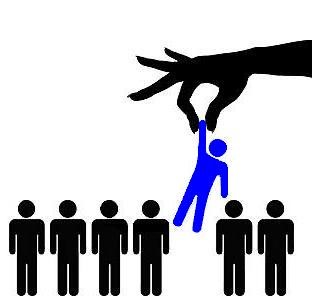5 Ways to Help New Employees Hit the Ground Running With ERP
Hiring new employees is a great sign for business both large and small. It means you’re growing, you can afford to hire additional employees, and the...
3 min read
Jeanne Lee Tue, Jun 16, 2015

 The ERP implementation processes is a very long and drawn out process and as you get closer to the end, it’s easy to skip some of the last steps just to be able to call it ‘done.’ For many companies end-user training is one of the areas that gets glanced over because it takes additional time and money. The trouble is that empowering your employees with the knowledge they need to use the system is mission critical to your ERP project success!
The ERP implementation processes is a very long and drawn out process and as you get closer to the end, it’s easy to skip some of the last steps just to be able to call it ‘done.’ For many companies end-user training is one of the areas that gets glanced over because it takes additional time and money. The trouble is that empowering your employees with the knowledge they need to use the system is mission critical to your ERP project success!
If users do not learn how to use the system they either (a) will not use the software at all or continue with the inefficient processes you’re trying to get away from, or (b) they will use it incorrectly. Either way you stand to lose out on the benefits and ROI you were hoping to see. I’m not just being dramatic either, Lumber Liquidators knows how true this is.
After mishandling their ERP implementation in 2010 the company, the #1 retailer of hardwood flooring in the United States, watched their net income drop by about 45% compared to the previous year. Executives readily admitted that product fit and installation was not to blame, it was a lack of training and change management that caused them to lose millions of dollars. In addition to net income, the company also noted an estimated $12-$14 million loss due to reduced productivity and unrealized net sales. All because they did not go through thorough training.
Unfortunately Lumber Liquidators is not alone, many companies have seen similar trouble due to insufficient attention to employee training. Here are a few ERP training best practices to follow if you’re planning an ERP implementation.
Do not forget to think about the different learning styles of your employees. While one person may get a lot out of a live classroom training, others may be able to better retain information by reading it or watching a video.
Another thing to think about: Are you providing strictly ERP training or ERP education? There’s a difference!
ERP training is extremely important and as we saw from the Lumber Liquidator story, a lack of focus on training can kill the ROI of your project, derail productivity, and hurt overall profitability. Putting your training plan together is not easy, but it’s worth it in the long run if you do it right.
Just remember that you’re not alone, ERP consulting organizations like us are here to help! We can help you design a program to meet your specific business and user needs, put it into action, and measure the results.

e2b teknologies is a passionate and experienced team of industry leaders and business advisers providing high quality, uncomplicated, and innovative ERP and CRM software with turn-key ERP consulting and custom ERP development services.
Contact us today or follow us on twitter@e2bteknolgies to learn how we can help you succeed with your ERP software project.

Hiring new employees is a great sign for business both large and small. It means you’re growing, you can afford to hire additional employees, and the...

If you go to “Google” and type in “reasons for ERP failure” the search comes back with “About 1,650,000 results”. There are literally thousands of...

Important considerations for ERP consultant selection The main goal of an ERP consultant is to help your company with the various different stages...